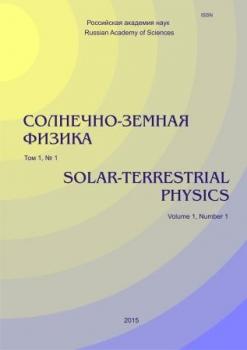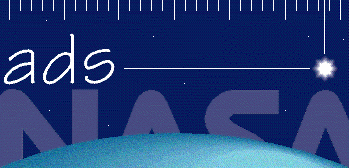Irkutsk, Russian Federation
Irkutsk, Russian Federation
Irkutsk, Russian Federation
Irkutsk, Russian Federation
Irkutsk, Russian Federation
The paper sequentially presents technique for determining velocity of meridional neutral winds from the Irkutsk Incoherent Scatter Radar (IISR) data. Due to IISR specific features effective at other IS radars, techniques for determining ionosphere parameters, in particular plasma drift velocities, resulted in considerable variance of defined parameters. To measure the plasma drift velocity taking into account such IISR features, we have developed a special technique based on phase analysis of autocorrelation function of incoherent scatter signal. The technique needs to be tested, and for this purpose, an experiment was carried out to measure velocities of low-orbit satellites. However, methods for meridional neutral wind calculations used by many authors [Evans, 1970] with the use of drift velocities obtained before, resulted in great disagreements with empirical HWM93 and HWM07 wind models. In addition, simultaneous measurements at two frequencies at IISR showed that it was difficult to explain such differences without taking into account the cross-field movements. Possible underestimation of the impact of movements generated by electric fields can result in serious error in determining wind velocities. The paper considers improvements for methods of calculating winds, and shows that the results obtained with it are in a better agreement with wind models.
ionospheric dynamics, neutral wind, thermospheric wind, incoherent scatter
ВВЕДЕНИЕ
С одной стороны, может показаться, что наше понимание физических процессов в ионосфере является достаточно полным. Использовались данные по электронной концентрации и температуре плазмы, взятые из модели IRI, ионному составу и концентрации нейтральных частиц (из глобальной атмосферной модели MSISE [Hedin, 1987]), совместно с текущими данными по солнечному ультрафиолетовому излучению [Tobiska, 1991]. Далее мы рассчитали уровни ионизации и рекомбинации. Получен результат, хорошо согласующийся с наблюдениями в областях E и F1. Добавив к перечисленному выше эффекты диффузии, доминирующие на больших высотах, в спокойной геомагнитной обстановке мы можем также получить хорошее согласие с результатами наблюдений на уровнях ионосферного максимума и выше [Titheridge, 1991]. Таким образом, казалось бы, текущие модели могут удовлетворительно объяснять большинство крупномасштабных особенностей ионосферных слоев. На практике, так как среднее время жизни ионизации может составлять несколько часов, ее распределение в значительной степени зависит от эффектов переноса вследствие электрических полей и ветров нейтральной атмосферы. Несмотря на множество работ, демонстрирующих хорошее согласие с моделями, есть такие, в которых показано, что модели не могут объяснить все крупномасштабные особенности поведения ионосферы, особенно для длинных рядов данных [Richards et al., 2009].
Таким образом, текущим предметом исследования является определение основных драйверов динамических эффектов, которые вызывают большинство аномалий в F-области ионосферы [Titheridge, 1991].
Именно поэтому проблема изучения динамического режима ионосферы относится к числу важнейших, а теоретическое и экспериментальное изучение движений в ионосфере занимает важное место в международных программах геофизических и космических исследований. Кроме того, параметры скоростей естественных крупномасштабных движений нейтральной и ионизированной компонент ионосферной плазмы необходимы для построения физических моделей верхней атмосферы, исследования физической природы взаимодействия различных атмосферных слоев, решения ряда прикладных задач (распространение радиоволн, ориентация космических аппаратов, радиоизмерения параметров их движения и т. д.).
Очень важный объем данных по ионосферной динамике, охватывающих значительный диапазон высот на разных долготах и широтах, обеспечивается глобальной сетью радаров НР, особенно в сочетании с другими инструментами дистанционного зондирования [Griffin et al., 2004a, b], начиная с оптических интерферометров Фабри-Перо [Vila et al., 1998], ионозондов [Lei et al., 2003; Shchepkin et al., 2009] и заканчивая GPS-спутниками и инструментами, установленными на искусственных спутниках Земли [Endawoke, Yizengaw, 2012]. В практике метода НР для определения лучевой скорости плазмы обычно используют спектр мощности или фурье-преобразование спектра - автокорреляционную функцию (АКФ). В первом приближении скорость дрейфа плазмы может быть определена независимо от других ионосферных параметров через угол наклона фазы ψ(τ) АКФ. Однако доплеровский сдвиг спектра НР за счет движения плазмы весьма мал по сравнению с шириной спектра рассеянного сигнала, а дисперсия при определении доплеровского сдвига велика. На ИРНР такая методика определения скорости дрейфа методом линейной регрессии имеет еще и дополнительную погрешность. Дело в том, что уникальной особенностью ИРНР, которую необходимо учитывать в ионосферных измерениях, является частотный принцип сканирования, т. е. зависимость направления излучения от несущей частоты. При возникновении, например, значительных горизонтальных градиентов электронной концентрации в плоскости сканирования этот фактор приводит к искажениям спектра НР-сигнала, делая его асимметричным. Искажения такого рода сказываются на точности восстановления параметров плазмы, в особенности при определении скорости дрейфа. Для компенсации этих искажений на ИРНР нами был разработан специальный метод [Potekhin, 2008].
1. Aponte N., Nicolls M.J., Sixto A. Gonza´lez, Sulzer M.P., Kelley M.C., Robles E., Tepley C.A. Instantaneous electric field measurements and derived neutral winds at Arecibo.Geophys. Res. Let. 2005, vol. 32, pp. L12107. DOIhttps://doi.org/10.1029/2005GL022609.
2. Beynon W.J.G., Williams P.J.S. 1978, Report Prog. Physics. V. 41, 909 p.
3. Brunelli B.E., NamgaladzeA.A. Fizika ionosphery [Physics of the Ionosphere]. Moscow, Nauka Publ., 1988. 528 p. (in Russian).
4. Butler T.W., Semeter J., Heinselman C.J., Nicolls M.J. Imaging F region drifts using monostatic phased array incoherent scatter radar. Radio Science. 2010, vol. 45, no. 5, rS5013.
5. Dougherty J.P., Farley D.T. A theory of incoherent scattering of radio waves by a plasma.Proc. Roy. Soc. 1960, A259, pp. 79-99.
6. Evans J.V. Observation of F region vertical velocities at Millstone Hill. Evidence for drifts due to expantion, contraction and winds. Radio Science. June 1971, vol. 6, no. 6, pp. 609-626.
7. Farley D.T. A theory of incoherent scattering of radio waves by a plasma. J. Geophys. Res. 1966, vol. 71, no. 17, pp. 4091-4098.
8. Griffin E.M., Aruliah A., Muller-Wodarg I.C.F., Aylward A. Meridional winds. I. Optical and radar experimental comparisons. Annales Geophysicae. 2004a, vol. 22, pp.849-862.
9. Griffin E.M., Aruliah A., Muller-Wodarg I.C.F., Aylward A. Comparison of high-latitude thermospheric meridional winds. II. Combined FPI, radar and model climatologies. Annales Geophysicae. 2004b,vol. 22, pp.863-876.
10. Grydeland T., Lind F.D., Erickson P.J., Holt J.M. Software radar signal processing. Annales Geophysicae. 2005, vol. 23,pp. 109-121.
11. Hedin A.E. MSIS-86 thermospheric model. J. Geophys. Res.1987, vol. 92, pp. 4649-4662.
12. Jiuhou Lei, Libo Liu, Xiaoli Luan, Weixing Wan. Model study on neutral winds in the ionospheric F2 region and comparison with the equivalent winds derived from the Wuhan ionosonde data.Terrestrial Atmospheric and Oceanic Sciences.2003, vol. 14, no. 1, pp. 1-12.
13. Kazimirovsky E.S., Kokourov V.D. Dvizheniya v ionosfere [Motions in the Ionosphere]. Novosibirsk,Nauka Publ., 1979. 344 p.(in Russian).
14. Kelley M.C. The Earth´s Ionosphere: Plasma Physics & Electrodynamics. 2nd Ed. Academic Press, 2009. 575 p. Intern. Geophys. Ser. 2009. V. 96.
15. Krinberg I.A., Tashchilin A.V. Large-scale model of the upper ionosphere. Issledovaniya po Geomagnetizmu, Aeronomii I PhizikeSolntsa [Res. on Geomagnetizm, Aeronomy and Solar Phys.]Moskow, Nauka Publ.,1979,iss. 45, pp. 122-127 (in Russian).
16. Nicolls M.J., Russell Cosgrove, Hasan Bahcivan. Estimating the vector electric field using monostatic, multibeam incoherent scatter radar measurements. Radio Sci. November 2014, vol.49,iss. 11,pp. 1124-1139.
17. Potekhin A.P., Medvedev A.V., Zavorin A.V., Kushnarev D.S., Lebedev V.P., Shpynev B.G. Development of diagnostic capabilities of the Irkutsk Incoherent Scattering Radar. Cosmic Res. 2008, vol. 46, no. 4, pp. 347-353.
18. Richards P.G., Nicolls M.J., Heinselman C.J., Sojka J.J., Holt J.M., Meier R.R. Measured and modeled ionospheric densities, temperatures, and winds during the international polar year. J. Geophys. Res. 2009, vol. 114, p. A12317. DOI:https://doi.org/10.1029/2009JA014625.
19. Romanova E.B., Zherebtsov G.A., Ratovsky K.G., Polekh N.M., Shi D., Vang S., Vang G. Comparison of response F2-region of the ionosphere to geomagnetic storms at middle and low latitudes. Solnechno-Zemnaya Fizika [Solar-Terrestrial Physics]. 2013, vol. 22, pp. 27-30 (in Russian).
20. SalahJ.E., HoltJ.M. Midlatitude thermospheric winds from incoherent scatter radar and theory. Radio Sci. 1974, vol. 9, no. 2, pp. 301-313. DOIhttps://doi.org/10.1029/RS009i002p00301.
21. Semeter J., Butler T., Heinselman C., NicollsM., Kelly J., HamptonD. Volumetric imaging of the auroral ionosphere: Initial results from PFISR. J. Atmos. Sol. Terr. Phys. 2008, vol. 71,pp. 738-743.
22. Semeter J., Butler T.W., Zettergren M., et al. Composite imaging of auroral forms and convective flows during a substorm cycle.J. Geophys. Res. 2010. V. 115. DOI:https://doi.org/10.1029/2009JA014931.
23. Shchepkin L.A., Kuznetsova G.M., Kushnarenko G.P., Ratovsky K.G. Calculations of the ionization drift velocity by the Titheridge method, based on the data obtained at theIrkutsk digisonde. Geomagnetism and Aeronomy. 2009, vol. 49,no. 8, special iss. 2, pp. 1308-1310.
24. Shcherbakov A.A., Medvedev A.V., Kushnarev D.S. Correlation method for determining the ionospheric plasma drift velocity at the Irkutsk Incoherent Scatter Radar.Geomagnetism and Aeronomy. 2009, vol. 49, no. 7, pp. 1028-1033.
25. Shun-Rong Zhanga, Shoichiro Fukaoa, Oliverc W.L., Yuichi Otsukaa. The height of the maximum ionospheric electron density over the MU radar. J. Atm. Solar-Terr. Phys. 1999, vol. 61,pp. 1367-1383.
26. Schunk R.W., Nagy A.F. Ionospheres: Physics, Plasma Physics, and Chemistry. 2nd Ed. Cambridge Atmospheric and Space Science Ser., 2009.
27. Tashchilin A.V., Romanova E.B. Numerical modeling the high-latitude ionosphere. Proc. COSPAR. Colloquia Series. 2002, vol. 14, pp. 315-325.
28. Titheridge J.A. Mean meridional wind in the ionosphere at 70° N. Planet Space Sci.1991, vol. 39, no. 5, pp.657-669.
29. Tobiska W.K. Revised solar extreme ultraviolet flux model.J. Atmos. Terr. Phys. 1991, vol.53, pp. 1005-1018.
30. Vickrey J.F., Swartz W.E., Farley D.T. Incoherent scatter measurements of ion counterstreaming. Geophys. Res. Lett.1976, vol. 3, no. 4, pp. 217-220.DOIhttps://doi.org/10.1029/GL003i004p00217.
31. Vila P., Rees D., Merrien P., Kone E. Fabry-Pérot interferometer measurements of neutral winds and F2 layer variations at the magnetic equator. Annales Geophysicae 1998, vol. 16,pp. 731-737.
32. Witasse O., Lilensten J., Lathuillere C., Pibaret B. Meridional thermospheric neutral wind at high latitude over a full solar cycle. Annales Geophysicae. 1998, vol. 16, pp. 1400-1409.
33. Yemelyanov L.Ya., Dzyubanov D.A. The peculiarities of mid-latitude ionosphere plasma drift velocity determination.Telecommunications Radio Engineering. 2007, vol. 66, no. 14,pp. 1313-1327.
34. Yizengaw E. Global longitudinal dependence observation of the neutral wind and ionospheric density distribution. Intern. J. Geophys.2012, vol. 2012. DOI:https://doi.org/10.1155/2012/342581.



















